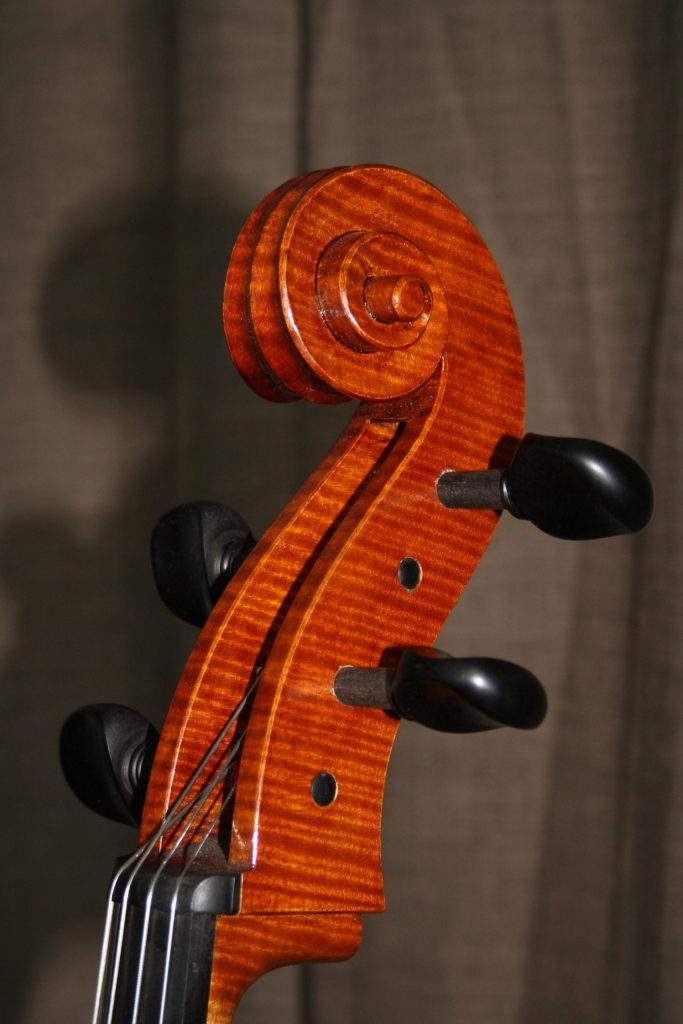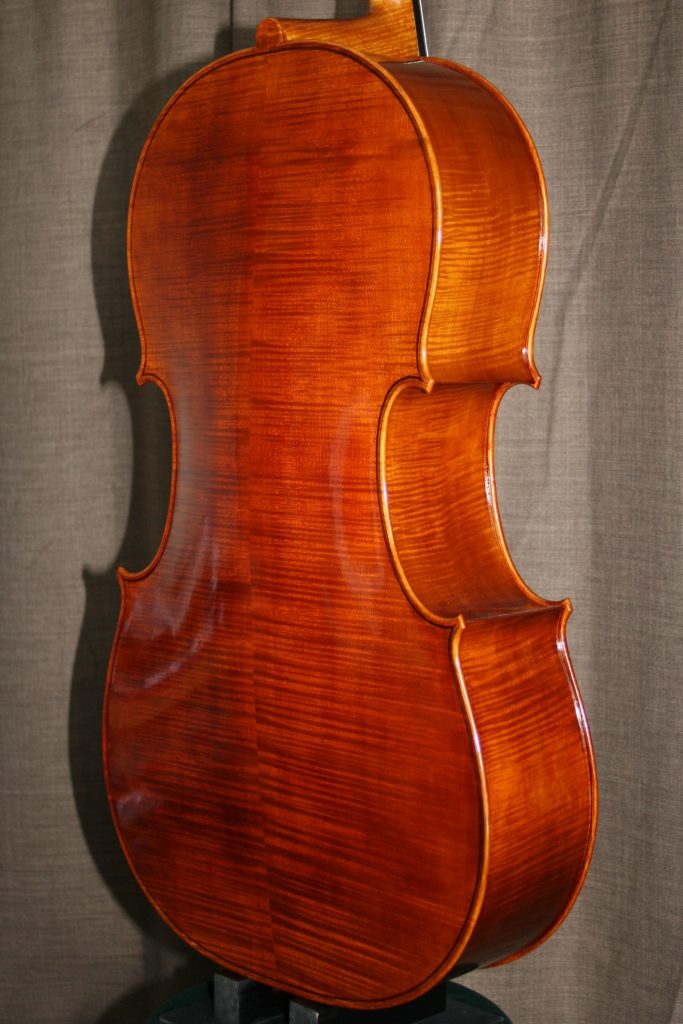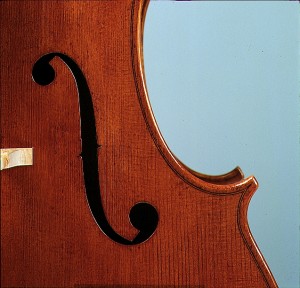It’s not surprising that I’ve had somewhat of a focus on cello making, given that I originally trained as a cellist. I’ve developed cello models mainly inspired by the work of Stradivari, Montagnana and Goffiriller, sometimes working quite closely to patterns and data I have for a specific historical instrument, sometimes bringing together ideas from various directions that I feel will work well together. I was very pleased when one of my cellos entered in the Strad International Cello and Bow Making Competition got the second highest score from the player judges.
Ensembles my cellos have been played in include the:
Academy of Ancient Music, Orchestra of the Age of Enlightenment, London Handel Orchestra/London Handel Players, The Gabrieli Consort and Players, New Zealand Symphony Orchestra.
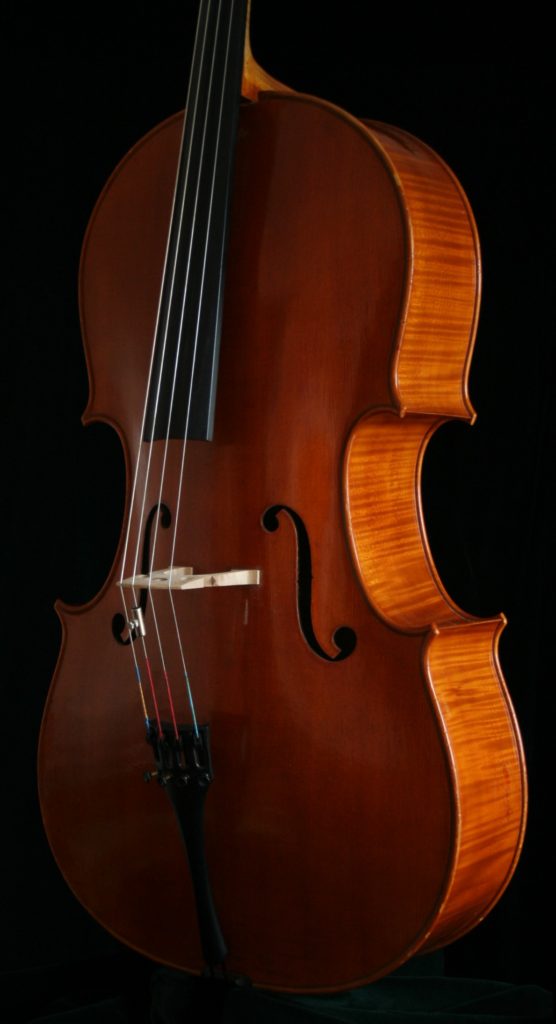
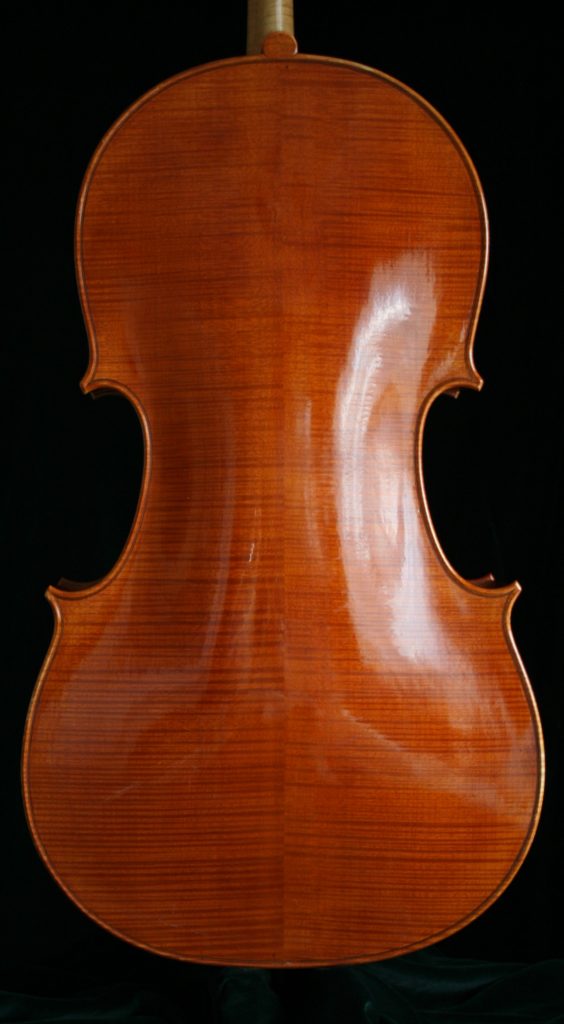
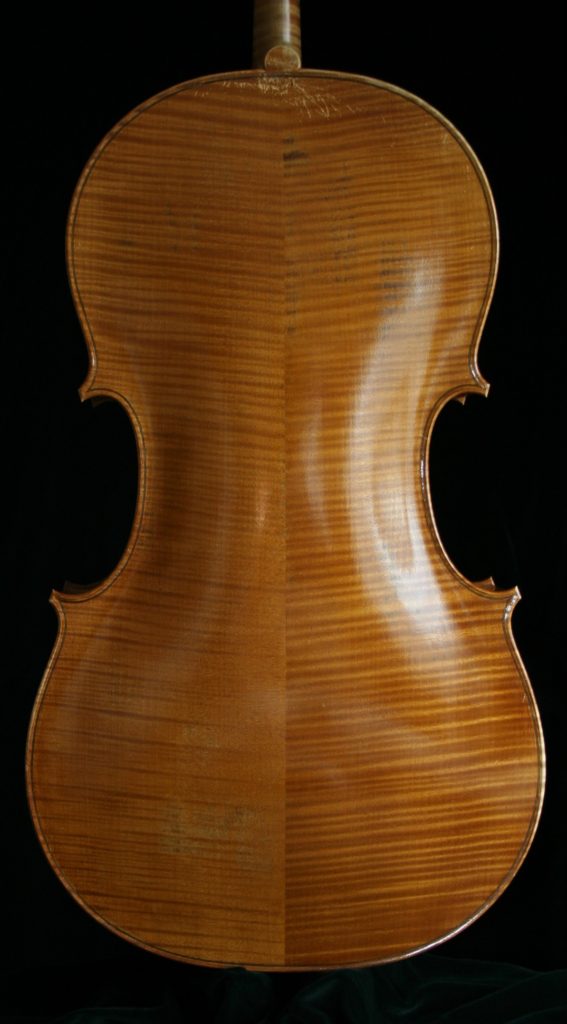
The original cello bears a label claiming it to be the work of the Cremonese maker Carlo Bergonzi (as does the much altered cello by Matteo Goffriller that was played by the great twentieth century cellist Pablo Casals).
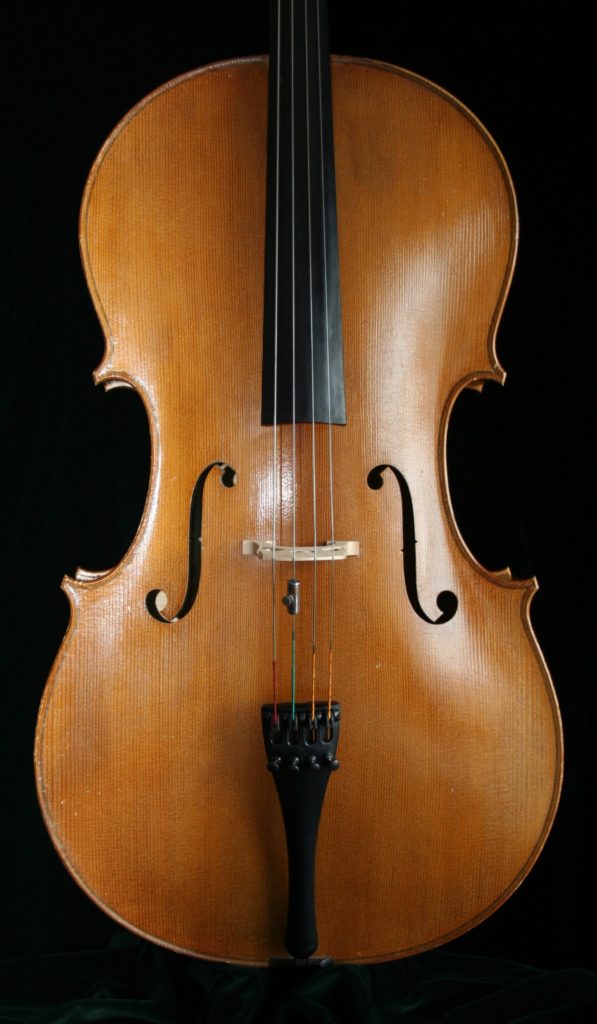
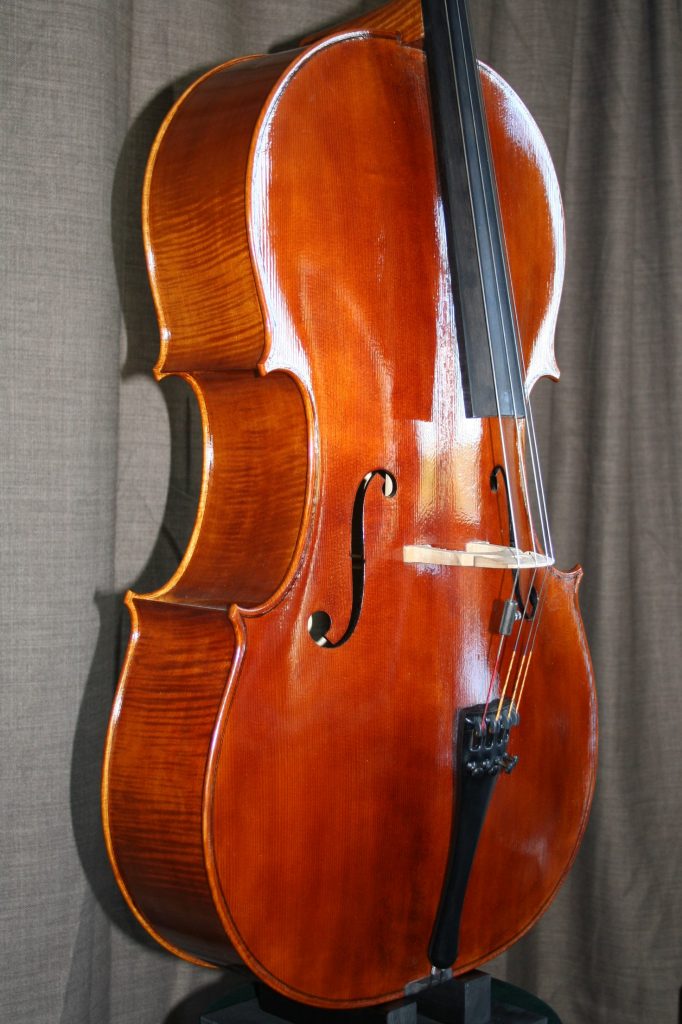
Cello 2022. The model of this cello is based on the “Mara” Stradivari, slightly shortened in the middle bouts to give it a more manageable stop. I took a big risk with using a very dark varnish right on top of a slaked plaster ground – very few coats, no polishing layer, no polishing, straight off the brush. A price was paid, but the result is a great C-string, lots of sizzle across the range, strong and very even across the strings and along the strings.
